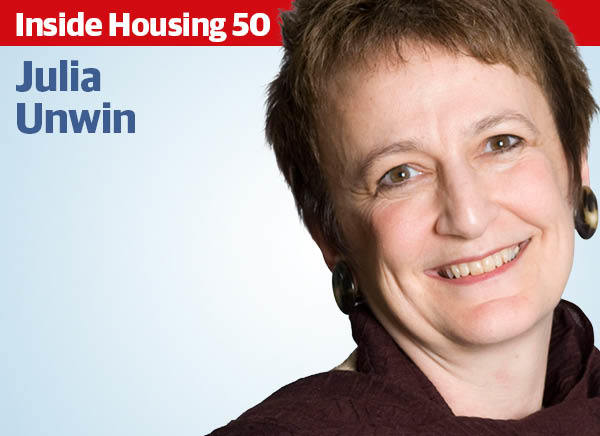A modern day Cathy
In Cathy Come Home, a family’s homelessness leads to their children being taken into care. Half a century later in modern Britain, it is still happening. Martin Hilditch investigates
She jokingly refers to herself as a “posh girl”. Behind closed doors, however, she was the victim of “extreme domestic violence”, with her husband “ticking every box you can think of”. Eventually, he forbade her from working and stopped going to work himself.
Echoes of Cathy
Erica re-mortgaged and eventually sold her home. Despite divorcing her husband he still had a hold over her because of the children. “He bled me dry financially,” she recalls, her voice breaking as she speaks. “I wasn’t thinking straight.”
A few years later, Erica has four young kids to look after and is broke. She turned to Westminster Council for help with housing earlier this year. But because she had previously sold a home and the money had gone, it deemed her to be intentionally homeless. Erica appealed but the council upheld its decision. She has launched a legal challenge but the council is now trying to remove her from the temporary accommodation it has housed her in up until this point.
“They interviewed me like I was a criminal. I’m not a bad mum. I’m not at all.”
Erica (name changed)
In effect, the housing department is saying its role is now over and Erica needs to contact social services because of the children. “They are saying we don’t have a duty of care for you, we have duty of care for your children,” she says. “They are saying ‘we could take your children off you’.”
Erica’s case has chilling echoes of Cathy Come Home, in which the title character has her children taken into care after becoming homeless. But 50 years on from the first screening of the landmark film, to what extent is this still happening to families in modern Britain?
Read Inside Housing editor Emma Maier on the Cathy at 50 campaign.
Gatekeeping tactic
Erica thinks the council is using “scare tactics” in an attempt to force her to move to cheaper housing out of London. Either way, she is struggling to find anywhere she can afford on housing benefit. The interview with social services was traumatic, she says. “They interviewed me like I was a criminal. I’m not a bad mum. I’m not at all.”
Erica’s situation closely resembles a landmark Supreme Court case from 2015, which set out new legal requirements for councils when placing homeless families outside their boundaries. In this case, the homeless mother, Titina Nzolameso, had her children placed in foster care after she rejected an offer from Westminster Council to house her family in Milton Keynes. These examples shed light on the little-scrutinised and opaque interaction between local authorities’ housing and social services departments. In the light of the Nzolameso case, Inside Housing has been investigating this relationship.
“It should be a wake-up call to all local authorities that they need to consider their obligations carefully.”
Jayesh Kunwardia, partner, Hodge, Jones & Allen
Freedom of Information Act requests found almost a third (33%) of the 106 councils to respond had taken a child into care in 2014/15 (the most recent year in which relevant figures are available) at least once where the main reason was the family becoming homeless. In one local authority it happened 43 times. In the case of Ms Nzolameso, she asked children’s services to provide accommodation for her children under the Children’s Act 1989 after the council refused to accommodate the whole family pending her application for permission to appeal its decision in the Court of Appeal.
Ms Nzolameso may have requested for the council to step in, but it was hardly a matter of choice. “You could call it a voluntary arrangement, but it was involuntary because there were no other options available to her,” explains Jayesh Kunwardia, partner at Hodge, Jones & Allen, who represented her and is now also acting for Erica.
“It should be a wake-up call to all local authorities that they need to consider their obligations carefully, in particular under the Children’s Act,” Mr Kunwardia adds. He says Erica’s case “sounds like Nzolameso Part Two” and he is hopeful it will be resolved on appeal - although it is only due to wrangling over the legal status of Erica’s accommodation that she hasn’t found herself in the same position as Ms Nzolameso.
Mr Kunwardia does not believe Inside Housing’s findings that almost a third of councils took at least one child into care last year - some 198 cases in total. “I would think it would be a lot higher,” he states. Giles Peaker, partner at Anthony Gold Solicitors, says case law compels councils to help families stay together “unless there is a good reason to separate them”. He says challenges referencing Article 8 of the Human Rights Act (the right to respect for family life) have succeeded because “taking the children is an Article 8 breach”. “Other steps could be taken that would render taking the children disproportionate,” he says. “It needs to be thoroughly justifiable.”
Nonetheless, he says it has been “commonplace for ages” for councils to threaten that children could be taken into care in homelessness cases. “Usually [it happens] if someone is looking like they are not going to accept an offer of accommodation through homelessness,” he says. “That has usually been understood by everybody, but not necessarily the homeless people, to effectively be an empty threat.”
“Of course, it scares the life out of the poor homeless applicant,” he adds. This last point is backed up by Jo Underwood, a solicitor at housing charity Shelter’s children’s legal service. Last week Ms Underwood tweeted she had just dealt with “another family told their kids will be taken into care when they ask for help after losing home”. She tells Inside Housing this “gatekeeping tactic” is used “fairly often” by councils.
Catch-22
Certainly a 2014 case involving Greenwich Council gives an insight into how town hall wrangling over resources can cause families problems. This Family Court case involved a five-year-old child, P, who had been placed in foster care by Redbridge Council in 2012. Two years later, his parents were “able to resume care of their son” as long as they were in settled housing.
The parents had applied for a home in Greenwich, which is where the boy’s father and P himself had lived for most of their lives. At this point, the Family Court heard, Greenwich Council assessed the family as needing a one-bedroom property as they had “no dependant” living with them - a catch-22 situation because P could not live with his parents until they had suitable stable accommodation.
“A key priority for the council is to help families avoid becoming homeless in the first instance by offering advice and support to enable them to stay together.”
Daniel Astaire, cabinet member for housing, Westminster Council
Judge Carol Atkinson was clear about the impact this had on P and his family in a scathing judgement, in which she suggested the council had acted “in bad faith”. She added: “I am not looking for any services out of the ordinary; I am looking for this family to be housed. These parents are vulnerable. This child is being prevented from returning to his family because they have nowhere to live. That cannot be right.”
A spokesperson for Greenwich Council says it has procedures, including joint working arrangements with children’s services and housing, to assess the housing needs of families. “In this case the Royal Borough responded to a request from another borough that we assist with meeting the housing needs of a family,” she says. “The council met that request.”
Westminster Council said it took no children into care because of family homelessness in 2014/15 in its Freedom of Information Act response. Daniel Astaire, cabinet member for housing with the council, says: “A key priority for the council is to help families avoid becoming homeless in the first instance by offering advice and support to enable them to stay together.”
Inside Housing’s research raises concerns about the way the system operates - and suggests a need for further examination. The day-to-day link between housing and care services has received too little external scrutiny. To illustrate the point, a number of councils were unable to tell us if they had taken children into care as a result of their families becoming homeless at all because it would be too difficult to search records. Yet it is hard to imagine a more important area for them to get right.
Meanwhile in Westminster, for Erica the stress continues. “All I want is a roof over my head,” she says. “I’m a human being and a mother, and I have done nothing wrong.”














